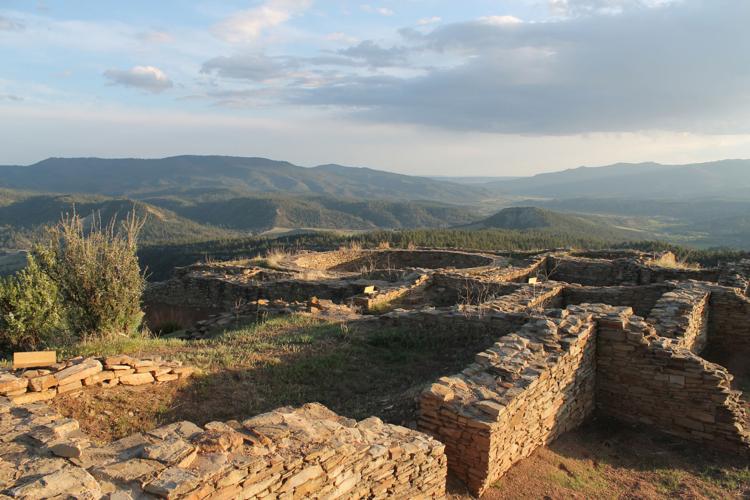Located at the southern end of the Rio Grande and San Juan National Forests, Chimney Rock National Monument offers visitors the chance to explore and experience the ruins of the ancient peoples who called the Southwest of Colorado home.
1. One thousand years ago, the site was home to the Ancestral Puebloans of the Chaco Canyon.
Ancestral Puebloans were people who lived in the Southwest United States one thousand years ago. Modern day Pueblo descend from these peoples. The people who inhabited the Chimney Rock site had ties to the larger Chacoan culture of the Four Corners area — the population was likely composed of local San Juan people and the Chacoans who traveled to the area from further south. The people who lived in this area were formerly called the Anasazi, but after opposition of the term from modern Pueblo people, the ancient peoples are now referred to as Ancestral Puebloans.

Chimney Rock National Monument in winter. Photo Credit: jim_mckenzie (Flickr)
2. Chimney Rock is open from May 15th through September 30th.
Chimney Rock has a limited season when the National Monument is open for visitors. It’s open throughout the summer months from 9 a.m. to 4:30 p.m. While the gate to the park is closed during the off-season, visitors can still hike the in the monument.
3. Chimney Rock is home to 200 preserved Chacoan buildings.

Chimney Rock in the San Juan National Forest in Southwest Colorado. Photo credit: U.S. Department of Agriculture (flickr)
Chimney Rock was a thriving community. It included homes for the many residents, ceremonial buildings, as well as storage. The two hundred buildings preserved at Chimney Rock are almost entirely unexcavated. They are preserved as ruins, giving visitors and researchers a glimpse of Ancestral Puebloan life.
4. Four of the ancient buildings have been excavated and stabilized for viewing.
While most of the buildings at Chimney Rock are preserved as ruins, four ancient buildings have been preserved as they likely existed during the time of the Ancient Puebloan occupation. The buildings excavated for viewing are a Great Kiva, a Pit House, a multi-family dwelling, and a Chacoan-style Great House Pueblo.
5. There’s an incredible view from the top.
At around 7,000 feet above sea level, Chimney Rock offers incredible views of the surrounding San Juan Mountains. Chimney Rock has the highest elevation of any Chacoan archeological sites. The hike from the base of the site to the top is a half-mile long.
6. Take a tour to experience the history of the site.
The National Monument has guided and audio tours to explore the history of the ancient dwellings. The audio-guided tour travels the paved, half-mile Great Kiva Trail and includes viewing of the pit house and Great Kiva. The guided tours are offered in one or two hour options. The hour-long tour explores the Pueblo trail and the Great Pueblo House. The two-hour tour visits all four excavated structures.










(0) comments
Welcome to the discussion.
Log In
Keep it Clean. Please avoid obscene, vulgar, lewd, racist or sexually-oriented language.
PLEASE TURN OFF YOUR CAPS LOCK.
Don't Threaten. Threats of harming another person will not be tolerated.
Be Truthful. Don't knowingly lie about anyone or anything.
Be Nice. No racism, sexism or any sort of -ism that is degrading to another person.
Be Proactive. Use the 'Report' link on each comment to let us know of abusive posts.
Share with Us. We'd love to hear eyewitness accounts, the history behind an article.